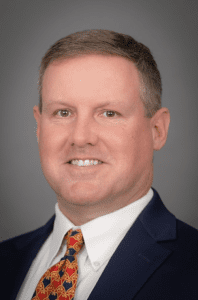“You want me to work here? Great! What’s in it for me?” That’s the question your school or district’s Employee Value Proposition (EVP) should answer.
Regardless of industry, the EVP is the set of benefits a company or organization provides employees, in return for their expertise and skills. It’s more than wages and healthcare. Let’s be real – anyone offering only the bare minimum of salary, health insurance, paid time off, and retirement is going to have a hard time filling positions.
In K-12 education as elsewhere, it’s the values- and vision-driven elements of an EVP that can have the strongest pull for potential candidates. As McKinney ISD’s Chief Human Resources Officer Dr. Chad Teague notes in an interview with Rhodes Branding, that includes:
- Responsive Career Development Opportunities
- Nonmonetary Employee Incentives
- A Culture of Work-Life Balance
Responsive Career Development Opportunities
Most every K-12 entity lists professional development days on their calendars, but districts like McKinney ISD in Texas show added value by shaping supports to fit their unique workforce.
Being responsive to the needs and desires of current employees and candidates – which fluctuate based on workforce trends – is key. For example, in SY 2021-2022, 60% of the teachers in Texas had been hired through alternative certification programs, as part of the state’s efforts to strengthen the lagging educator workforce.
“We had to step up our game supporting these new teachers,” who hadn’t had the experiences of lesson planning or holding parent-teacher conferences that come with student teaching in traditional preservice programs, said Teague. Leaders identified where the district needed to provide different kinds of supports, and adjusted accordingly.
Similarly, the 1st Year Teacher Program’s quarterly sessions vary annually, to uniquely support that year’s cohort. While standards like classroom management, grade submissions, and parent communications are always covered, Teague said, “The other half of the meeting is very fluid. If you’d asked me for a curriculum for our 1st Year Teacher program, I couldn’t create one because it changes yearly … just based off their needs that they have.”
In another responsive move, McKinney ISD shifted the time of day these career support sessions are offered – and proactively ensures class coverage for attendees. With attendance data and teacher feedback to support the change, the district prioritized holding 1st Year Teacher Program training meetings during the school day and removed the onus of finding a substitute from the new teachers.
“During the summer, we know what dates we’re having all these meetings, so we contact our subs even before school starts,” Teague said. With sub placements for new teachers set far in advance, he says, “Our fill rate is 100%.”
Efforts like these show new teachers their employer is invested in their successful onboarding, and integration into their new work community and career.
Nonmonetary Employee Incentives
Finding workplace flexibility wherever possible for employees is another benefit schools and districts can provide employees. McKinney ISD found (by way of competitor districts) a method to incentivize hard-to-fill occupational therapist, physical therapist, and student language pathologist positions. Since their job duties aren’t tied to a campus five days a week, “They’re allowed to work from home one day (a week), and it’s understood that they’re going to be working on paperwork those days,” said Teague.
Admittedly, Teague said, McKinney ISD was reactionary in implementing this change – once they’d lost 8 of their speech-language pathologists to a nearby district offering this as part of their EVP. But they did something about it last July and now, “We’ve built our pool back up.”
As a low-cost, high-reward strategy for impacting morale and retention, strategic public recognition should also be a nonmonetary employee incentive in districts’ EVPs. What makes it strategic? Intentionally making recognition part of company culture, and not just when those “School [insert job title] Month” celebrations roll around.
Gallup and Workhuman identified five essential pillars of strategic recognition in the workplace; to be effective, public recognition should be:
- Fulfilling
- Authentic
- Personalized
- Equitable
- Embedded in company culture
Using historical teacher absence data, McKinney ISD found a personalized, authentic way to effectively recognize its subs – who’ve been integral in maintaining a high fill rate for the district even throughout the COVID-19 pandemic. Twice a year, the HR team makes special visits to classrooms throughout the district to show appreciation. “We pick the days that historically have the most absences to shower gifts on substitutes,” said Teague.
Nonmonetary employee incentives like these have kept morale, retention, and fill rates high. And the strategic public recognition has been fulfilling for staff. Teague said, “We actually had someone tell us, ‘I was going to put in my resignation letter until ya’ll came by.’”
Now at a fill rate of 87%, McKinney ISD is proactive in keeping its reliable pool of substitutes happy, especially since they’re setting records for the most teacher absences they’ve ever had. But that’s for another good reasonE
Culture of Work-Life Balance
Teacher absences at the district are higher this year, “because we encourage them to take their days,” said Teague.
It’s all part of the work-life balance culture that McKinney ISD preaches to candidates and new hires from the get-go: “We actually give every one of our new employees a book called, ‘The Well Balanced Teacher,’” said Teague. More importantly, Human Resources staff help employees stay accountable to this wellness goal by providing real support when someone comes to them feeling stressed or concerned about burnout.
“I ask, ‘What are you doing? What are you being asked to do?’” said Teague. “If they’re staying up til 9 at night doing lesson plans, that’s where we can intervene and provide an instructional coach, or teach them how to use AI efficiently.”
Or, it’s covering a class for an overwhelmed teacher to help them recalibrate and get back to their best professional selves. For example, the 10-person HR team has taken shifts covering one full day of classes for a teacher who needed support. “Whenever I interview someone for Human Resources, I ask if they’ve ever substituted, or if they’d be willing to,” said Teague. “It’s a non-negotiable.”
It’s one thing for a district to say it values work-life balance for its employees. But unless the administration actually prioritizes and invests in it in practice and procedure, it’s nothing more than a pipe dream and false advertising.
And while salary, insurance coverage and retirement plans will always be key considerations for K-12 job-seekers, the strongest EVPs will communicate a district’s vision and values through what they offer their most valuable asset – their employees.
About Dr. Teague
Dr. Chad Teague has served 29 years in education as a teacher, assistant principal, principal, Director of Human Resources, and most recently as Chief Human Resources Officer for McKinney ISD for the last four years. He has presented on human resources best practices at the national level at various American Association of School Personnel Administrators professional development events for the past three years.

AI contributed to the graphic for this blog.
Molly is the liaison between education leaders and the agency, connecting the K-12 community with services designed to accelerate performance and market position. She leads content and partner engagement strategy and is a frequent conference presenter and podcast/blog guest. Molly likes to push it to the limit, and races competitively in Obstacle Course Races on the weekends.
-
Molly McGowan Gorsuch, APRhttps://www.rhodesbranding.com/author/molly/
-
Molly McGowan Gorsuch, APRhttps://www.rhodesbranding.com/author/molly/
-
Molly McGowan Gorsuch, APRhttps://www.rhodesbranding.com/author/molly/
-
Molly McGowan Gorsuch, APRhttps://www.rhodesbranding.com/author/molly/





